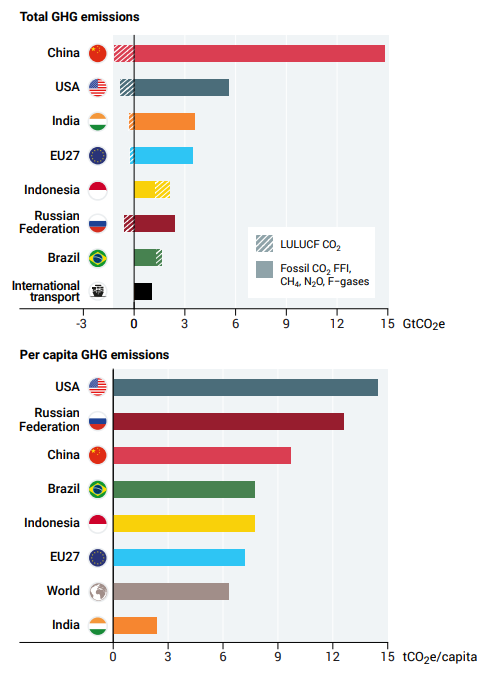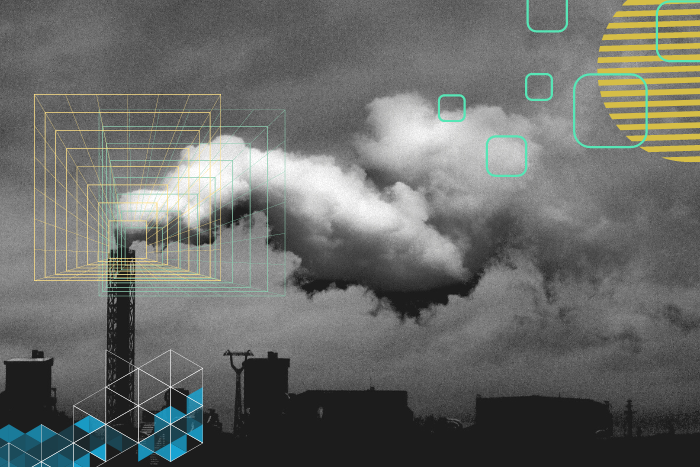The world is still falling short of the Paris climate goals and only an urgent system-wide transformation can avoid an accelerating climate disaster, says the report
With COP27 only a couple of days away, UNEP’s ‘Emissions Gap Report 2022: The Closing Window – Climate crisis calls for rapid transformation of societies’ found that the countries are off track to achieve even the globally highly insufficient NDCs. The report warned that policies currently in place with no additional action are projected to result in global warming of 2.8°C over the twenty-first century. Implementation of unconditional and conditional NDC scenarios reduces this to 2.6°C and 2.4°C respectively.
According to the report, global GHG emissions in 2030 based on current policies are estimated at 58 GtCO2e. The implementation gap in 2030 between this number and NDCs is about 3 GtCO2e for the unconditional NDCs, and 6 GtCO2e for the conditional NDCs. The emissions gap in 2030 is 15 GtCO2e annually for a 2°C pathway and 23 GtCO2e for a 1.5°C pathway. This assumes full implementation of the unconditional NDCs, and is for a 66 % chance of staying below the stated temperature limit. If, in addition, the conditional NDCs are fully implemented, each of these gaps is reduced by about 3 GtCO2e.
The possibility of a new emissions record
The report found global GHG emissions for 2021, excluding land use, land-use change and forestry (LULUCF), are preliminarily estimated at 52.8 GtCO2e, a slight increase compared to 2019, suggesting that total global GHG emissions in 2021 will be similar to or even break the record 2019 levels.
Based on national inventories, the LULUCF sector was a net sink in 17 of the G20 member states in 2020, including in China, the US, India, the EU27 and the Russian Federation. GHG emissions excluding LULUCF in these countries are therefore higher. By contrast, said the report, the LULUCF sector is a net emitter in Indonesia and Brazil, accounting for 44% and 22% of their emissions respectively.
G20 responsible for 3/4th of global emissions
According to the report, collectively, G20 members are responsible for 75% of global GHG emissions. China, the EU27, India, Indonesia, Brazil, the Russian Federation and the US were the top seven emitters. Also, international transport accounted for 55% of global GHG emissions in 2020 .

The report also found that consumption-based emissions are highly unequal between and within countries. Excluding LULUCF, the bottom 50% emit on average 1.6 tCO2e/capita and contribute 12% of the global total, whereas the top 1% emit on average 110 tCO2e/capita and contribute 17% of the total.
Implementation gap, insufficient NDCs and doubtful net-zero pledges
Collectively, the G20 members are not on track to achieve their new or updated NDCs. The report found an ‘implementation gap’, defined as the difference between projected emissions under current policies and projected emissions under full implementation of the NDCs. This implementation gap is 1.8 GtCO2e annually by 2030 for the G20 members.
Globally, the NDCs are highly insufficient and the emissions gap remains high, found the report. Current commitments by countries as expressed in their unconditional and conditional NDCs for 2030 are estimated to reduce global emissions by 5% and 10% respectively, compared with current policies and assuming that they are fully implemented. To get on track for limiting global warming to below 2.0°C and 1.5°C, global GHG emissions must be reduced by 30% and 45% respectively, compared with current policy projections.
So far, 19 G20 members have committed to achieving net-zero emissions, up from 17 at COP26. However, the credibility and feasibility of the net-zero emission pledges remains very uncertain, mentioned the report. These targets vary in a number of important respects, including their legal status; time frame; explicit consideration of fairness and equity; which sources, sectors and gases they cover; whether they will allow the use of international offsets to count towards their achievement; the level of detail they provide on the role of CO2 removal; and the nature of planning, review of and reporting on target implementation.
The need for speed and financial reform
While mapping opportunities for improvements, the report said that the transformation towards zero greenhouse gas emissions in electricity supply, industry, transportation and buildings is underway, but needs to move much faster.
Avoiding lock-in of new fossil fuel-intensive infrastructure, further advancing zero-carbon technologies, market structures and planning for a just transformation, and applying zero-emission technology and behavioural changes to sustain reductions to reach zero emissions are needed. Food systems, which account for one third of all emissions, can be reformed to deliver rapid and lasting cuts, the report noted.
A global transformation to a low-carbon economy is expected to require investments of at least $4-6 trillion a year. Delivering such funding, the report said, will require a transformation of the financial system and its structures and processes . The report further recommended six approaches to financial sector reform: make financial markets more efficient through taxonomies and transparency, introduce carbon pricing, nudge financial behaviour through public policy interventions, create markets for low-carbon technology, mobilise central banks, and set up climate “clubs” of cooperating countries to facilitate cross-border finance initiatives and just transformation partnerships.
About The Author
You may also like
Zero sharm game: COP27 saves face with minimum common agreements
Issue of mitigation in agriculture remains a sticky subject
Oil and gas lobby makes its presence felt more than ever at COP27
Question of ‘who will pay’ loomed large over LTF negotiations at COP27
Mitigation work programme: Equity gone, rich countries push hard to shift emission cuts to Global South at COP27

